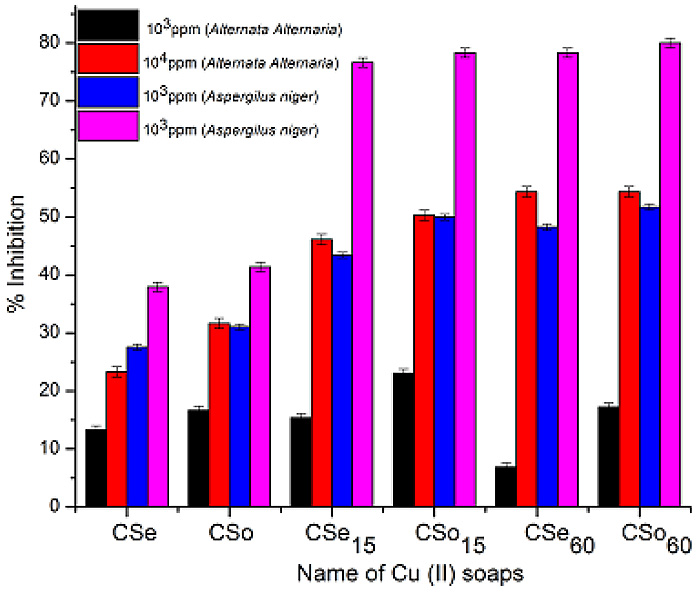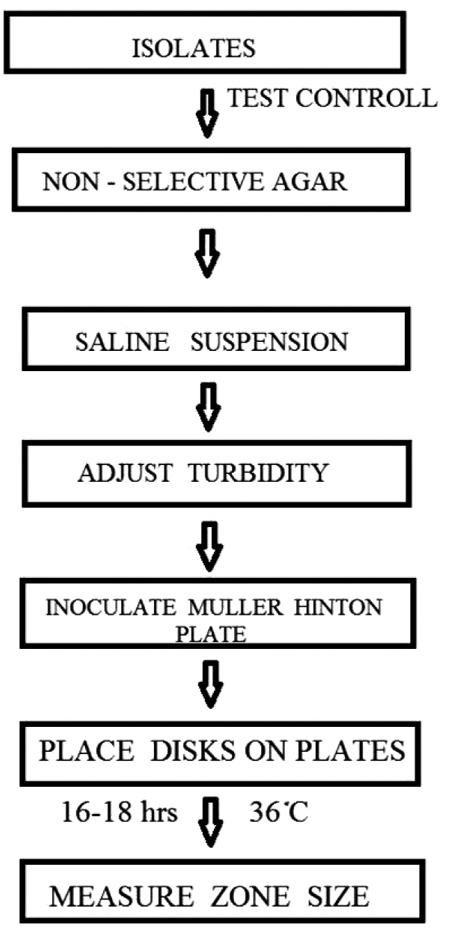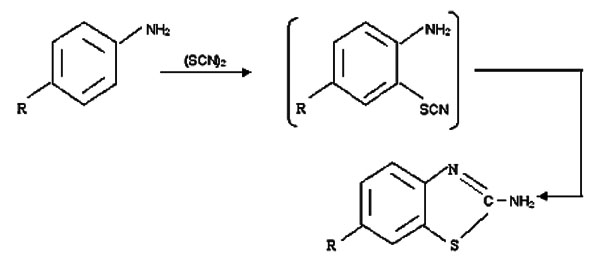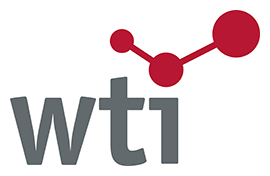REVIEW ARTICLE
Nanomedicine-Mediated Combination Drug Therapy in Tumor
Dazhong Chen1, Fangyuan Xie1, 4, Duxin Sun3, Chuan Yin2, Jie Gao1, 3, *, Yanqiang Zhong1, *
Article Information
Identifiers and Pagination:
Year: 2017Volume: 4
First Page: 1
Last Page: 10
Publisher Id: PHARMSCI-4-1
DOI: 10.2174/1874844901704010001
Article History:
Received Date: 26/10/2016Revision Received Date: 27/11/2016
Acceptance Date: 13/12/2016
Electronic publication date: 19/01/2017
Collection year: 2017
open-access license: This is an open access article licensed under the terms of the Creative Commons Attribution-Non-Commercial 4.0 International Public License (CC BY-NC 4.0) (https://creativecommons.org/licenses/by-nc/4.0/legalcode), which permits unrestricted, non-commercial use, distribution and reproduction in any medium, provided the work is properly cited.
Abstract
Background:
Combined chemotherapy has gradually become one of the conventional methods of cancer treatment due to the limitation of monotherapy. However, combined chemotherapy has several drawbacks that may lead to treatment failure because drug synergy cannot be guaranteed, achievement of the optimal synergistic drug ratio is difficult, and drug uptake into the tumor is inconsistent. Nanomedicine can be a safe and effective form of drug delivery, which may address the problems associated with combination chemotherapy.
Objective:
This review summarizes the recent research in this area, including the use of nanoparticles, liposomes, lipid-polymer hybrid nanoparticles, and polymeric micelles, and provides new approach for combined chemotherapy.
Methods:
By collecting and referring to the related literature in recent years.
Results:
Compared with conventional drugs, nanomedicine has the following advantages: it increases bioavailability of poorly soluble drugs, prolongs drug circulation time in vivo, and permits multiple drug loading, all of which could improve drug efficacy and reduce toxicity. Furthermore, nanomedicine can maintain the synergistic ratio of the drugs; deliver the drugs to the tumor at the same time, such that two or more drugs of tumor treatment achieve synchronization in time and space; and alter the pharmacokinetics and distribution profile in vivo such that these are dependent on nanocarrier properties (rather than being dependent on the drugs themselves).
Conclusion:
Therefore, nanomedicine-mediated combination drug therapy is promising in the treatment of tumors.
1. INTRODUCTION
1.1. Tumor Chemotherapy
Tumor chemotherapy refers to the use of chemical substances to treat cancer. It is a systemic treatment that can effectively kill tumor cells, inhibit the growth of tumors, and improve the survival rate. However, due to poor targeting, chemotherapy drugs not only kill tumor cells, but also damage the body's normal cells, resulting in a series of toxic side effects [1]. These include bone marrow suppression, cumulative cardiotoxicity, neutropenia, alopecia, vomiting, etc. Furthermore, the development of multidrug resistance(MDR) is a major obstacle for tumor chemotherapy [1, 2]. Generally, the toxic side effects and MDR of chemotherapy could be partially overcome by the combined chemotherapy.
1.2. Combined Chemotherapy
Because a single chemotherapeutic agent is ineffective in tumor treatment, the use of two or more drugs simultaneously or sequentially has become commonplace; this regimen is called combined chemotherapy [3-5]. This approach needs to abide by the following principles: (1) each chemotherapeutic drug should be effective in isolation; (2) the mechanism by which the drugs act should be different; (3) the combined effect of the chemotherapeutic agents should be additive or synergistic; (4) toxicity profiles should not overlap; and (5) the drug combination must have an acceptable therapeutic window [5, 6]. When compared with individual drug approaches, combined chemotherapy can reduce the risk of MDR and improve the therapeutic effect, as well as avoiding the side effects associated with the long-term use of a single drug [7].
To achieve the best therapeutic effect, it is necessary to determine optimal drug ratios in order to maximize drug synergy. A variety of mathematical methods have been used to calculate the interactions between drug combinations (namely synergistic, additive, or antagonistic) [8, 9]. The median-effect method of Chou and Talalay is the most common method used for combination drug analysis because it utilizes CalcuSynsoftware to evaluate the optimal drug ratio [10]. The combination index (CI) develops this median-effect method further [11], and states that: CI=(D1)/(DX)1+(D2)/(DX)2, (where (DX)1 and (DX)2 are the concentrations of drug1 and 2 that inhibit the rate of tumor cell proliferation at X% in isolation, and D1 and D2 are the concentrations of drug1 and 2 in combination that inhibit the rate of tumor cell proliferation at X%). When CI=1, the drug interactions are additive, whereas the combination drugs act synergistically when CI<1 and antagonistically when CI>1.
However, there are still some factors, which may contribute to the failure of combined chemotherapy, for example, uncertainty of drug synergy, difficulty in the achievement of the optimal drug synergistic ratio, and inconsistency of drug uptake into the tumor [12].
1.3. Nanomedicine
Nanomedicine is a safe and effective form of drug delivery. These formulations use natural or synthetic polymeric materials to encapsulate or absorb drugs, and the carrier materials include polymers, liposomes, micelles, proteins, and metallic materials. Compared with traditional drug delivery systems, nanomedicine has the following advantages: it increases the bioavailability of poorly soluble drugs, prolongs drug circulation time, increases penetrability, permits loading of a variety of drugs, improves drug efficacy and targeting, and reduces toxicity [13, 14]. These advantages have contributed to the research interest in nanomedicine-mediated combined chemotherapy and resulted in the successful development of some novel nanomedicine-anticancer drugs.
1.4. Nanomedicine-Mediated Combined Chemotherapy
As previously mentioned, combined chemotherapy has certain drawbacks, which result in failure to kill tumor cells. Nanomedicine may solve this problem by maintaining the optimal synergistic ratio of the drugs, delivering them to the tumor simultaneously, and altering the pharmacokinetic and distribution profile in vivo because these are dependent on nanocarrier properties (rather than being dependent on the drugs themselves) [15]. Thus, nanomedicine-mediated combination drug therapy appears to be very promising for tumor treatment and there are several drugs currently in clinical trials.
2. NANOPARTICLE-MEDIATED COMBINED CHEMOTHERAPY
Nanoparticles are usually prepared from natural or synthetic polymeric materials using supercritical fluid technology [16], the solvent evaporation technique [17], and high pressure homogenization [18]. Ideal polymeric materials should be biodegradable and biocompatible. Examples of natural polymers include gelatin, chitosan, alginate, gliadin, etc., while those of synthetic polymers include polylactic acid (PLA), polyglycolic acid (PGA), poly (lactic-co-glycolic) acid (PLGA), poly (alkylcyanoacrylate) (PACA), etc. However, some non-biodegradable polymeric materials can also be used for the preparation of nanoparticles such as polymethyl methacrylate (PMA) and polymethyl methacrylate (PMMA) or similar materials.
Table 1 gives several examples of recent research reports relating to nanoparticle-mediated combined chemotherapy [15, 19-25, 27-30]. For instance, co-delivery of docetaxel (DTX) and tanespimycin (17-AAG) by hyaluronic acid (HA)-modified PLGA nanoparticles had shown the highest synergistic effect in killing MCF-7, MDA-MB-231 and SCC-7 cells at the molar ratio of 2:1 (DTX:17-AGG), and this synergistic antitumor activity was also demonstrated in vivo [19]. Furthermore, Wang et al. [20] developed PEGylated PLGA nanoparticles for co-encapsulating paclitaxel (PTX) and etoposide (ETP) and demonstrated that co-delivery system enhanced cell cycle arrest and apoptosis of the human osteosarcom cells and improved cytotoxic activity of chemotherapeutic drugs.
| Combined Chemotherapeutics | Drug delivery system | Type of cancer | Ref. |
|---|---|---|---|
| Docetaxel and tanespimycin | Hyaluronic acid-decorated PLGA nanoparticles | Breast cancer, squamous cell carcinoma | [19] |
| Paclitaxel and etoposide | PEG-PLGA nanoparticles | Osteosarcoma | [20] |
| Cisplatin and paclitaxel | Folic acid modified PEG-PLGA nanoparticles | Non-small lung cancer | [21, 22] |
| Cisplatin and doxorubicin | Transferrin modified PEG-PLGA nanoparticles | Human hepatoma carcinoma | [23] |
| Combretastatin-A4 phosphate and doxorubicin | mPEG-PLA nanoparticles | Human nasopharyngeal epidermal carcinoma | [24] |
| Paclitaxel and tetrandrine | CTAB@MSN | Breast cancer | [25] |
| mPEG-PCL nanoparticles | Gastric cancer | [27] | |
| PEG-b-PCL nanoparticles | Gastric cancer | [28] | |
| Pirarubicin and paclitaxel | Human serum albumin nanoparticles | Breast cancer | [15] |
| Hypocrellin B and paclitaxel | Hyaluronic acid–ceramide nanoparticles | Lung cancer | [29] |
| Doxorubicin and paclitaxel | mPEsG-b-PLG-b-PLL/DOCA nanovehicle | Non-small cell lung cancer | [30] |
PEG-PLGA and PEG-PLA nanoparticles have also been chemically altered to improve tumor targeting. For example, He et al. [21, 22] utilized folic acid (FA)-modified PEG-PLGA nanoparticles for the co-delivery of cisplatin (CDDP) and PTX. This approach inhibited non-small cell lung cancer with a drug concentration ratio of 1:2 (CDDP:PTX). Similarly, Zhang [23] and colleagues designed transferrin-modified PEG-PLGA nanoparticles (Tf-DDP/ DOX NPs) for co-delivery of CDDP and doxorubicin (DOX). Compared with free drugs, Tf-DDP/DOX NPs demonstrated greater antitumor activity for hepatoma carcinoma both in vivo and in vitro. Finally, Zhang et al. [24] synthesized methoxy poly (ethylene glycol)-b-polylactide (mPEG-PLA) diblock copolymers by ring-opening polymerization. Combretastatin-A4 phosphate (CA4P) and DOX were loaded onto these mPEG-PLA nanoparticles, and demonstrated effective synergistic cytotoxicity, inhibiting human nasopharyngeal carcinoma angiogenesis and preventing proliferation of human nasopharyngeal epithelial cancer cells when the drug ratio of DOX:CA4P was 1:10.
In addition to using polymeric materials, inorganic materials, ceramides, and human serum albumin can also be used as nanocarriers. Human serum albumin (HSA), a protein found in the human serum, is particularly suited as a nanocarrier material due to its non-toxicity, biocompatible, and biodegradable [26]. Yi et al. [15] prepared a co-delivery system of PTX and pirarubicin (THP) by using HSA, and their results indicated that the nanoparticles had greater cytotoxicity against 4T1 breast cancer cells when compared with single or free drug delivery. Furthermore, the side effects of the drugs were significantly reduced, including bone marrow suppression, and organ or gastrointestinal toxicity.
3. LIPOSOME-MEDIATED COMBINED CHEMOTHERAPY
Liposomes are spherical envelopes with a lipoid bilayer, adapted to encapsulate drugs [31]. When compared with nanoparticles, liposomes have greater biocompatibility, and some liposome-mediated combined chemotherapy preparations have entered into clinical trials. There searchers at Celator Pharmaceuticals utilized distearoylphosphatidylglycerol (DSPG), distearoylphosphatidylcholine (DSPC), and cholesterol (Chol) to prepare liposomes for co-encapsulating cytarabine (Ara-C) and daunorubicin (DNR) at a molar ratio of 5:1. The resulting drug, CPX-351, significantly inhibited leukemia cells in vitro (while maintaining tumor cell selectivity), and the two drugs still acted synergistically in vivo, with similar anti-leukemia effects [31-33]. Furthermore, CPX-351 is in stage III of clinical trials, and the latest reports indicate that the US FDA has granted breakthrough therapy status to Celator Pharmaceuticals’ CPX-351 for the treatment of adults with therapy-related acute myeloid leukemia (t-AML) and AML with myelodysplasia-related changes (AML-MRC).
A list of recent studies concerning liposome-mediated combined chemotherapy is presented in Table 2 [34-44]. For example, Riviereet et al. [34] compared the antitumor effect of co-delivery of the synergistic drugs fluoroorotic acid (FOA) and irinotecan (IRN) in the same liposome versus delivery of the same drugs in separate liposomes. The co-delivery system was more successful in inhibiting the proliferation of C26 cells in vitro; however, the drugs did not have synergistic effects in the C26 tumor mouse model [34]. These results demonstrate the challenges associated with developing synergistic treatment protocols in vivo based on in vitro studies.
| Combined Chemotherapeutics | Drug delivery system | Type of cancer | Ref. |
|---|---|---|---|
| Fluoroorotic acid and irinotecan | Liposome | Colorectal cancer | [34] |
| Salinomycin and chloroquine | Liposome | Human hepatoma carcinoma | [35] |
| Salinomycin and Doxorubicin | Liposome | Human hepatoma carcinoma | [36] |
| Doxorubicin and erlotinib | Liposome | Triple negative breast cancer, Non-small cell lung cancer | [37] |
| Omacetaxine Mepesuccinate and doxorubicin | Liposome | Human cervical carcinoma | [38] |
| Combretastatin A-4 and doxorubicin | Octreotide-modified stealth liposomes | Non-small cell lung cancer, Breast cancer | [39] |
| Paclitaxel and doxorubicin | Liposome | Lung cancer | [40] |
| Paclitaxel and lonidamine | Liposome | Breast cancer | [41] |
| Topotecan and vincristine | Liposome | Daoy tumors | [42] |
| Vincristine and quercetin | Liposome | Breast tumor | [43] |
| Vincristine and temozolomide | Solid lipid nanoparticles | Glioma | [44] |
Our group reported an effective strategy for targeting liver cancer cells (HepG2) and liver cancer stem cells (HepG2-TS) by developing liposomes for co-delivery of salinomycin (SAL) and chloroquine (CQ) [35]. After screening, the synergistic molar ratio of SAL:CQ was 1:5, the liposome particle size was about 120nm, and the PDI was greater. In vitro cytology results showed that combining drugs could improve the cytotoxic effect of SAL in HepG2 cells, but not in HepG2-TS. We surmised that the mechanism might be related to the basal autophagy flux, as autophagy plays a protective role in liver cancer. Therefore, we measured the basal autophagy flux of the two cell types, and demonstrated that it was significantly greater in HepG2 cells. When SAL was combined with CQ in HepG2 cells,the antitumor effect of SAL was improved because CQ could inhibit autophagy [35]. Furthermore, our group loaded SAL and DOX into liposomes separately, and in combination, to assess the subsequent antitumor activity in liver cancer. The results showed that co-delivery liposomes and separate liposomes had similar antitumor activity [36].
In addition, Morton et al. used the chemical properties of liposomes and drugs to create a controlled sequence of drug release [37]. The hydrophobic drug erlotinib and the hydrophilic drug DOX were encapsulated in the hydrophobic compartment and the hydrophilic interior of liposomes, respectively. This enabled them to achieve the desired time sequence of drug release in which erlotinib first inhibited EGFR activity in cancer cells and changed the intracellular apoptotic pathways, thus improving the sensitivity of breast cancer cells to the later release of DOX. Encouragingly, this time-staggered drug delivery could potentially enhance antitumor effects in vivo [37].
4. LIPID-POLYMER HYBRID NANOPARTICLE-MEDIATED COMBINED CHEMOTHERAPY
Lipid-polymer hybrid nanoparticles are prepared using polymeric and lipid materials which exhibit a core-shell structure [45]. They possess a wide range of potential applications, as they overcome some of the drawbacks associated with liposome nanoparticles: they are less physically and chemically unstable and they are easier to store, thus reducing drug leakage into the circulation. Furthermore, they have greater drug loading capacity than polymer nanoparticles, and exhibit better tumor targeting [45-47]. The recent research regarding lipid-polymer hybrid nanoparticle-mediated combined chemotherapy is summarized in Table 3 [48-52].
| Combined Chemotherapeutics | Drug delivery system | Type of cancer | Ref. |
|---|---|---|---|
| Doxorubicin and curcumin | Lipid nanoparticles | Hepatoma carcinoma | [48] |
| Doxorubicin and sorafenib | Lipid-polymer hybrid nanoparticles | Hepatocellular carcinoma | [49] |
| Axitinib and celastrol | PEGylated lipid bilayer-supported mesoporous silica nanoparticles | Squamous carcinoma, breast cancer, neuroblastoma | [50] |
| Paclitaxel and curcumin | PEGylated hybrid liposomes-albumin nanoparticles | Breast cancer, melanoma cells | [51] |
| Sorafenib and quercetin | RGD peptide modified lipid coated nanoparticles | Hepatocellular carcinoma | [52] |
Of particular note, Zhao [48] and colleagues employed lipid-polymer hybrid nanoparticles to encapsulate curcumin (CUR) and DOX to investigate their antitumor activity on diethylnitrosamine (DEN)-induced hepatocellular carcinoma in mice. The results showed that co-delivery of CUR and DOX in this way enhanced their antitumor effects, promoting apoptosis of tumor cells and inhibiting both tumor cell proliferation and angiogenesis. Further analysis also indicated that DOX/CUR-NPs had greater antitumor effects than DOX-NPs, which was related to regulation of the levels of hypoxia-associated mRNA and protein, as well as drug resistance [48]. In another study, Zhang et al. [49] successfully bound iRGD peptide to lipid-polymer hybrid nanoparticles in order to enhance the antitumor efficacy of DOX and sorafenib (SOR). Compared with the free drugs and nanoparticles without iRGD peptide modification, DOX+SOR/iRGD-NPs had greater synergistic cytotoxic effects; they also prolonged the cycle time, improved the biocompatibility, and enhanced endocytosis and drug accumulation in the tumor. In a mouse model of liver cancer, the tumor inhibition effect of these DOX+SOR/iRGD-NPs was even more significant [49].
Furthermore, although lipid-polymer hybrid nanoparticles are generally prepared using polymeric and lipid materials, they have also been produced from inorganic materials and liposomes. In a recent research by Choi et al. [50], combined ACML nanoparticles were formed by loading axitinib (AXT) in PEGylated lipid bilayers and celastrol (CST) in MSN. Cytological experiments demonstrated that ACML could inhibit both angiogenesis and mitochondrial function and induce apoptosis in several cell types (SCC-7, BT-474 breast cancer cells and SH-SY5Y neuroblastoma cells). Notably, the tumor inhibition effects were even more significant in mouse tumor models.
5. POLYMER MICELLE-MEDIATED COMBINED CHEMOTHERAPY
Another promising form of nanocarrier is the polymer micelle, and several drug-loaded micelles have entered into clinical trials (for example, the PTX-loaded polymer micelles, NK105, and the CDDP-loaded polymer micelles, NC-6004) [53-55]. Table 4 provides an overview of recent studies using polymer micelle-mediated combined chemotherapy [56-62].
| Combined Chemotherapeutics | Drug delivery system | Type of cancer | Ref. |
|---|---|---|---|
| Cisplatin and paclitaxel | PEG–PGlu90–PPhe25 hybrid micelles | Ovarian cancer | [56] |
| Linear-dendritic telodendrimer micelles | Ovarian cancer | [57] | |
| Doxorubicin and disulfiram | Polymeric micelles | Breast cancer | [58] |
| Doxorubicin and curcumin | Polymeric micelles | Breast cancer | [59] |
| Doxorubicin and paclitaxel | Pluronic mixed micelles | Breast cancer | [60] |
| Docetaxel and chloroquine | PEO–PPO–PCL/TPGS micelles | Breast cancer | [61] |
| Paclitaxel and curcumin | PEG-PE and vitamin E micelles | Ovarian cancer | [62] |
In order to eradicate ovarian cancer, Desale et al. [56] synthesized biodegradable triblock copolymers containing ethylene glycol, glutamic acid, and phenylalanine (PEG–PGlu–PPhe). These copolymers self-assembled to form micelles for the co-delivery of CDDP and PTX, and the resulting nanomedicine mounted strong tumor suppression effects both in vitro and in vivo. Similarly, Cai et al. [57]. used polymeric micelles containing CDDP and PTX for the treatment of ovarian cancer. They developed three-layered linear-dendritic telodendrimer micelles and loaded drugs at a 2:1 molar ratio of CDDP:PTX. Compared with the free drug combination and loading in separate micelles, the co-delivery micelles provided greater tumor targeting and prolonged drug half-life. Moreover, the antitumor effect was significant and it could enhance the survival of mice [57].
Finally, Duan et al. [58] developed a pH-sensitive polymeric micelle system to achieve the temporal release of two drugs. The researchers conjugated DOX to a poly (styrene-co-maleic anhydride) (SMA) derivative with adipic dihydrazide (ADH) through an acid-cleavable hydrazone bond. They then loaded disulfiram (DSF) into the polymer micelles through the self-assembly of a SMA-ADH-DOX (SAD) conjugate [58]. This nanomedicine rapidly released DSF to inhibit the activity of P-glycoprotein and then slowly released DOX to increase its accumulation within tumor cells and enhance the antitumor response.
6. OTHER NANOMEDICINE-MEDIATED COMBINED CHEMOTHERAPY
Apart from the previously mentioned nanocarriers, microemulsions and microspheres are also traditional drug carriers. Owing to the relatively large particle size, these drug carriers have some unique properties such as a high drug-loading capacity and reduced drug leakage. Noh et al. [63] designed and prepared multi-prodrug nanocarriers (MPDNCs), with PTX being conjugated with polylysine carboxylate to form a cationic polymer (PLL-PTX), and HA and gemcitabine (GEM) combined to form an anionic polymer (HA-GEM). The two types of polymer then formed the multi-prodrug nanocarrier through electrostatic interaction. Because HA binds to the CD44 receptor, these MPDNCs targeted the CD44 over expression of the biliary cancer cell lines, HuCCT1, and therefore markedly inhibited cancer cell proliferation. Furthermore, they also induced cancer cell apoptosis and improved anti-tumor activity [63].
Similarly, Lee et al. [64] prepared double-layered microparticles using DOX loaded into the PLGA shell and PTX loaded into the poly (L-lactic acid) (PLLA) core. By changing the polymer ratio, the burst release of DOX was controlled and the drug release time prolonged to 2 months. The double-layered microparticles significantly reduced the rate of formation of microspheres and had a good antitumor effect when incubated with MCF-7 microspheres [64].
7. SEPARATE NANOMEDICINE-MEDIATED COMBINED CHEMOTHERAPY
As discussed above, co-delivery of chemotherapeutic agents in nanoparticles can improve the effects of combined chemotherapy for the treatment of tumors. However, there is also evidence that loading single drugs into separate nanoparticles can also achieve the desired antitumor effect. These preparations overcome certain difficulties associated with co-delivery, namely that the drug combinations are flexible, the synergistic ratio of the drugs is maintained, and drugs with disparate chemical properties can be effectively delivered within their own uniquely tailored carrier particles. Nevertheless, it is difficult to control the synergistic ratio and the concentration of the two drugs at the target site in vivo, so the success of this strategy is dependent upon the specific circumstances in which it is used.
In general, two kinds of chemotherapeutic drugs are respectively loaded into the carriers to target both cancer stem cells and tumor cells. Cancer stem cells are a form of undifferentiated or primitive cells, with the capacity for multipotent differentiation and self-renewal ability [65-69]. Our group has used this strategy previously to target MCF-7 and MCF-7 microspheres [70]. In this study, we used silane coupling agent-modified MSN to separately encapsulate 8-hydroxyquinoline (8-HQ) and DTX. The DTX-loaded MSN and 8-HQ-loaded MSN were then covered with lipid bilayers and HA-bound lipid bilayers, respectively, producing DTX-MSS and 8-HQ-HA-MSS. Our results demonstrated that DTX-MSS was more effective in inhibiting MCF-7 than MCF-7 microspheres, whereas the role of 8-HQ-HA-MSS was just the opposite . Therefore, combining the two forms of nanomedicine resulted in better antitumor activity and reduced drug toxicity in normal cells [70].
In another example of this approach, Ke et al. [71] used polymer micelles to target tumor cells and cancer stem cells. The polymer micelles were prepared using two diblock copolymers, one of PEG and urea-functionalized polycarbonate (PEG-PUC), and another of PEG and acid-functionalized polycarbonate (PEG-PAC) in a 1:1 molar ratio. Thioridazine (THZ) and DOX were loaded into these polymer micelles, respectively (THZ-MM and DOX-MM). It has been reported that THZ could kill cancer stem cells [72].The results confirmed that the free drug THZ and THZ-MM had inhibitory effect on cancer stem cells, and both the free drugs in combination and the polymer micelle combination could effectively inhibit the proliferation of cancer stem cells. However, the polymer micelle combination was found to have the most significant antitumor effect in a BT-474 nude mice tumor model [71].
Finally, Li et al. [73] demonstrated that decitabine (DAC) and DOX-loaded nanoparticles had the best inhibitory effect on cancer stem cells.
CONCLUSION
Cancer is one of the main threats to human health; therefore, the question of how to cure it has become an important research topic worldwide. Currently, chemotherapy is a common mode of treatment, and the combination of two or more chemotherapeutic agents greatly improves the therapeutic effect. However, this combined strategy has significant drawbacks, namely drug toxicity and difficulty maintaining the synergistic ratio of the drugs, which leads to treatment failure. Nanomedicine may provide a solution for this problem by increasing the antitumor activity of combined chemotherapy through novel delivery methods. At present, however, few preparations progress to the clinical research stage, and the scientific community faces challenges in terms of enhancing the antitumor effects, overcoming practical application problems, and expanding the scope of nanomedicine-mediated combined chemotherapy. We believe that with scientific and technological progress, these challenges are not insurmountable and that nanomedicine-mediated combined chemotherapy will succeed in the treatment of cancer.
CONFLICT OF INTEREST
The authors confirm that this article content has no conflict of interest.
ACKNOWLEDGEMENTS
This work was supported by the National Natural Science Foundation of China (Grant No. 81573376, 81472829).














